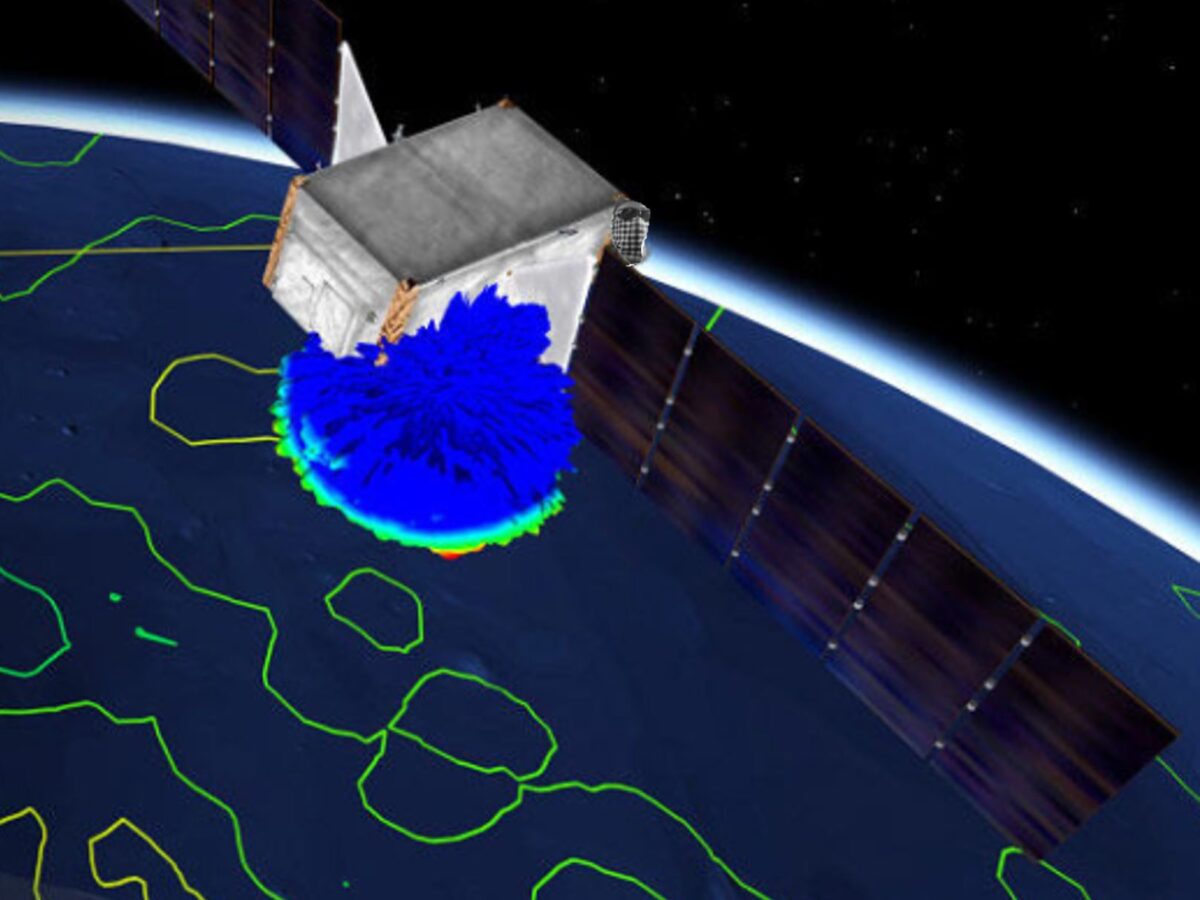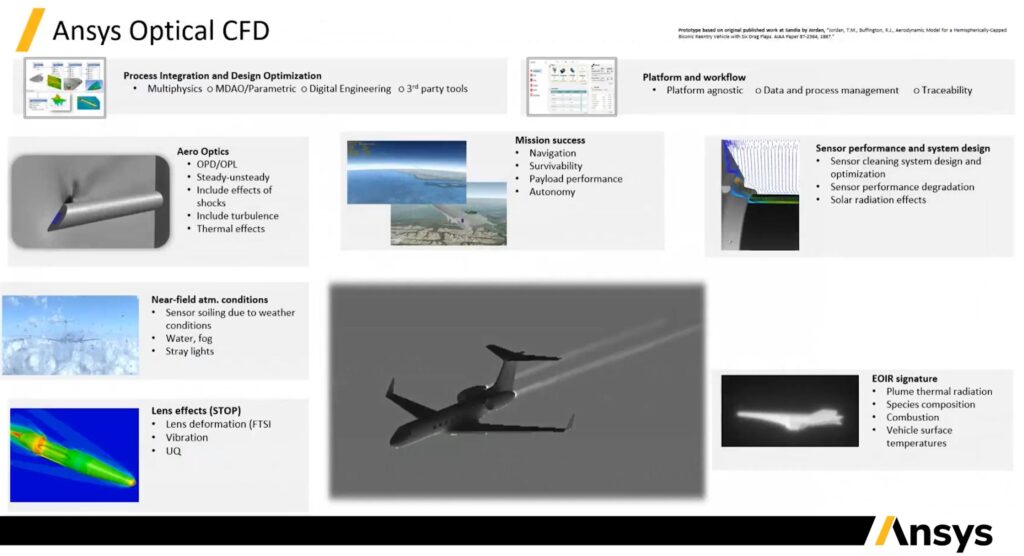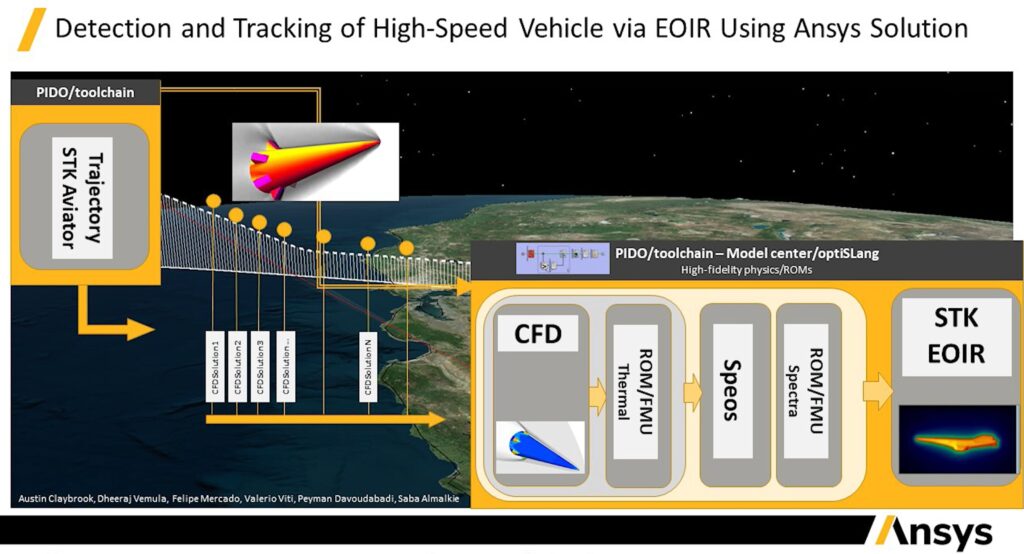Electro-Optic / Infra-Red (EO/IR) sensors are critical to imaging systems used in military or law enforcement applications. EO/IR sensors use both visible and infrared wavelengths to provide better situational awareness in either day/night and low light conditions, with the benefit of very long range and image stabilisation capabilities. EO/IR sensors are typically mounted on satellites, aircraft or maritime vehicles to help identify and track fast-moving targets and assess threats across large distances in any environmental conditions.
Recent developments in simulation from Ansys now allow for a new “optical CFD” workflow which enables accurate simulation of the complex interactions that can occur between the flow and electromagnetic fields within the EOIR range. This enables engineers to apply simulation to improve the performance of these complex systems by better quantifying how flow field phenomena around fast-moving vehicles (such as temperature gradients, turbulence and flow compressibility) are affecting the EOIR signals received by a sensor.
Recent geopolitical developments and the emergence of new weapons that can travel at hypersonic speeds has increased demand from defence forces to be able to accurately detect and track hypersonic missiles. In recent news reported by Defence Connect, Northrop Grumman has now completed their design review for a new hypersonic missile sensor, which was announced as a major milestone in using space-based sensors to track hypersonic ballistic missiles over extremely long ranges.
Northrop Grumman’s Hypersonic and Ballistic Tracking Space Sensor (HBTSS) prototype was designed for the US Missile Defence Agency (MDA) with the intention to sense heat signatures to detect and track missiles from their earliest stages of launch through interception. The program is reported to be on schedule to deliver the HBTSS prototype in 2023, after which the company will conduct an on-orbit test to assess its continuous tracking and rapid processing of hypersonic threats.
So how might a defence prime like Northrop Grumman have used simulation to develop and refine this type of EO/IR sensor system? Multiple physics are at play and must be accurately accounted for to deliver the desired goal of providing “continuous tracking and handoff to enable targeting of enemy missiles launched from land, sea or air — a key part of the Overhead Persistent Infrared (OPIR) multi-layered constellation of satellites.” Some of these key physics are described in the figure below.
Ansys has been actively working in this field with key customers worldwide. Internal development of Ansys Fluent CFD have been integrated with the recently acquired optics software from Optis and Zemax. Bringing this workflow together has been a significant achievement, and our colleagues at Ansys recently held a webinar to showcase how simulation can be used for detection and tracking of high-speed vehicles via EO/IR using this combination of Ansys software – a complex but necessary workflow shown below that incorporates CFD, Twin Builder, Speos (optics) and STK (AGI). This webinar can now be viewed on demand at this link.
At LEAP, we work closely with many local government agencies, defence primes and startups to advance the local engineering capabilities in Australia. “When we spoke to a propulsion engineer recently, we agreed that the spacecraft numerical modeller and the CFD or FEA modeller operate in two separate worlds. One does mission design while the other does component design. Up until now there has been little to no overlap between these numerical models. But now we can take a component, a chip, an antenna from FEA, CFD or EM and couple it in real time within the larger mission model”, explains Joel Thakker, Senior Engineering Solutions Manager, LEAP Australia. “That gap or those assumptions that needed to made going from one model to another has just been bridged - we can now go from component level to mission level analysis - all in one sitting. And that has huge potential for mission planners and component or payload developers.”
“These new technical capabilities have been arriving steadily over the last few releases and have come together to give Ansys extremely strong and well developed capabilities in hypersonics, turbulence modelling, adaptive meshing to capture shocks and a host of other improvements,” adds Prof. David Fletcher, senior CFD specialist at LEAP Australia. “During this period the solver performance and meshing capabilities have also undergone massive developments, so that using scale resolving turbulence models with poly-hexcore meshes, non-iterative solvers running in distributed parallel makes such simulations well within reach”.
It becomes clear that a physics-based simulation approach is now an important tool for engineers involved in the development of modern EO/IR sensors. Simulation brings a core advantage by overcoming the downsides associated with physical tests – including difficulties reproducing the correct atmospheric/flow conditions in a ground-based test facility, and the extremely high costs and long lead-times of flight testing. If you’re interested in exploring this new EO/IR simulation capability for sensor performance, aero-optics, near-field atmospheric conditions and/or better detection and tracking of IR signatures, please get in touch with LEAP’s expert team via our CFD page at https://www.leapaust.com.au/cfd/.








